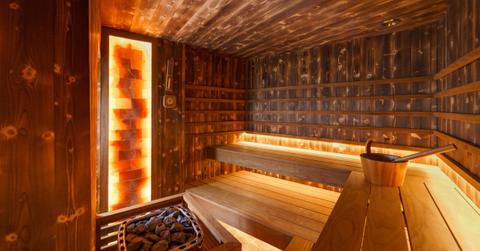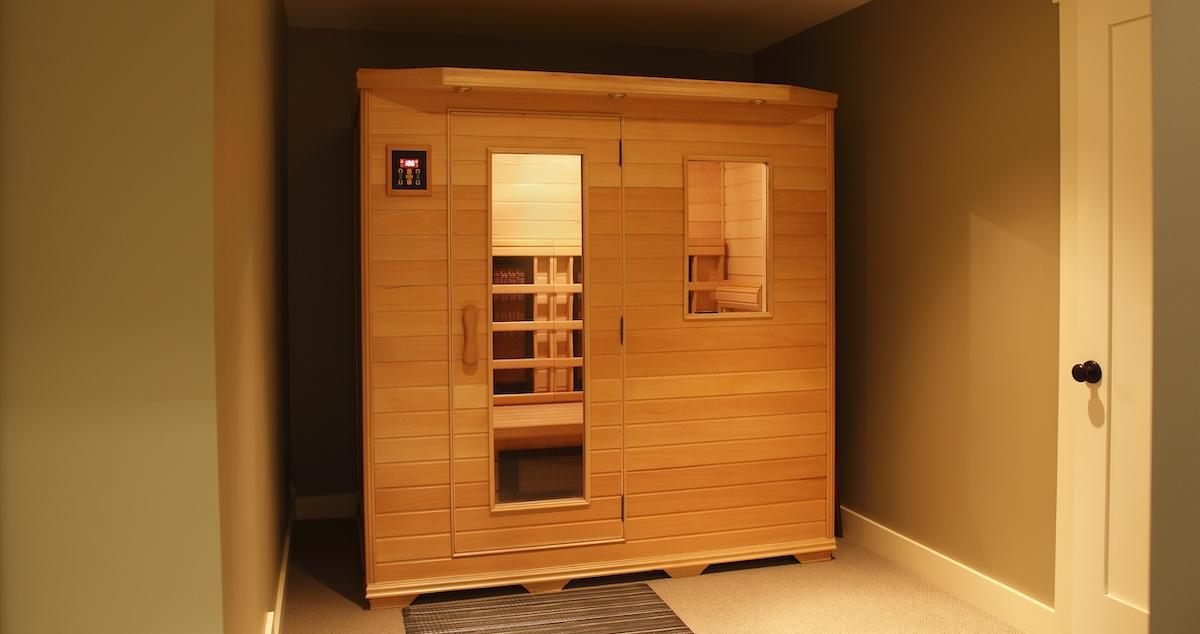Infrared Sauna vs. Dry Sauna: Which Is the Right One for You?
Saunas have been used for their health benefits for centuries.
Published June 27 2024, 4:34 p.m. ET

A dry sauna.
Saunas, which are typically small rooms that are super heated to mimic the same feelings that a person would get from an intense workout, have been used for thousands of years. That's because people can experience relief from certain symptoms when they visit a sauna, and some medical professionals even claim that these types of sweat lodges can help with certain medical conditions.
But not all saunas are created equal. And when it comes to understanding the difference between an infrared sauna and a dry sauna, there are a lot of things you should take into consideration. Keep reading to learn more about the two and to decide whether a trip to a sauna is the right move for you. And as always, talk to a medical professional before making decisions about your healthcare.

An infrared sauna.
Infrared saunas are a modern version of the classic sauna.
When you think of a sauna, you likely think of a small room with a heat source (usually some hot rocks piled atop of a fire), where people relax in a towel while they soak in the heat. And while this has been a popular method of creating these little rooms for centuries, there are modern saunas that rely on lighting to heat things up. These infrared saunas (somethings called far-infrared saunas or FIRS due to where these lights fall on the light spectrum) work by heating the body, not the air.
The Mayo Clinic says that there are several studies that seem to show benefits of using an infrared sauna, including alleviating symptoms of some of the following conditions:
- Type 2 diabetes
- High blood pressure
- Dementia and Alzheimer's
- Heart failure
- Arthritis
- Headache.
But, unlike with dry saunas, these FIRS don't normally get quite as hot, so people looking for a more extreme treatment may want to look elsewhere.

A small infrared sauna.
Dry saunas offer the classic sauna experience.
Dry saunas on the other hand use a dry heat to increase the temperature in the air, which can include electric, wood burning, and even steam options. Medical News Today says that some of the perks of using a dry sauna include:
- Better circulation
- Pain relief
- Reduced stress
- Improved cardiovascular health
- Alleviating skin conditions
- Improved Asthma
- Lower risk of Alzheimer's
They can also reach temperatures of up to 212 degrees Fahrenheit!

A dry sauna.
Infrared sauna vs. dry sauna: The winner depends on your needs.
When it comes to choosing which one is right for you, you'll need to consider what your possible health risks are. Saunas aren't without their downsides, and certain people should avoid using them. For example, Medical News Today says you don't want to enter a sauna if you have been drinking alcohol, or if you are at an increased risk of dehydration (like those with kidney disease).
Additionally, you shouldn't enter a sauna if you're pregnant, suffering from low blood pressure, or under the age of 6. For everyone else, picking between a dry sauna and an infrared sauna will boil down to preference and individual needs. For instance, those who have mobility issues or those who cannot be exposed to extreme heat will be better off using an infrared sauna, whereas those who aren't limited by any restrictions may want to try the more aggressive dry sauna experience.
No matter which option you choose, you'll need to stay hydrated. So remember to drink a lot of water in the days and hours leading up to your treatment and don't forget to talk to you doctor before you make an appointment!